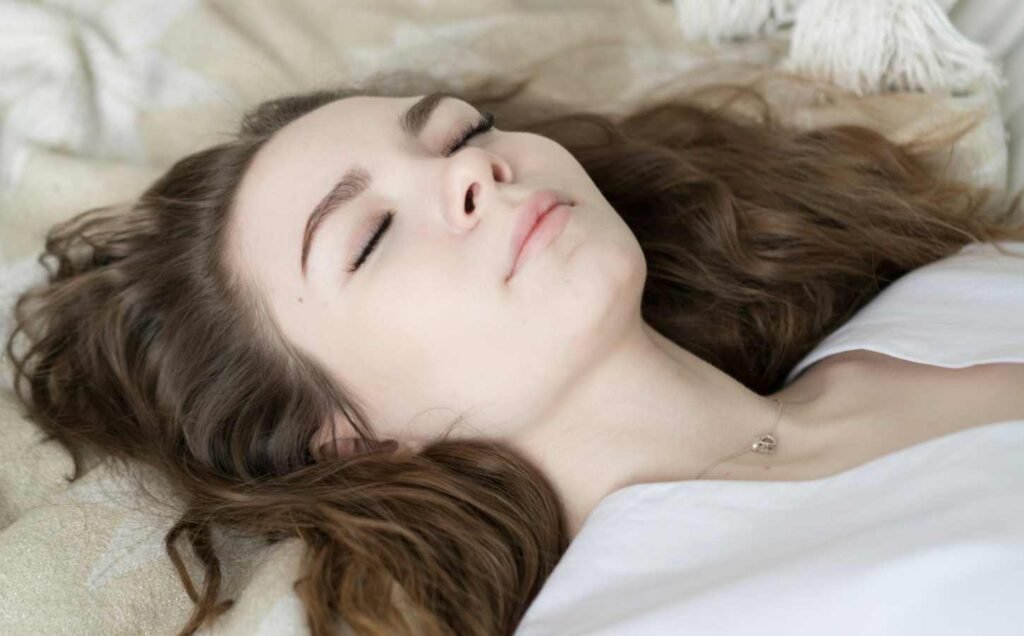Hypnagogic hallucinations are a type of hallucination that occur as a person is falling asleep.
Hypnagogic hallucinations are also known as sleep hallucinations or predormital hallucinations. These hallucinations can be visual, auditory, or tactile, and can be very vivid and realistic.
Hypnagogic hallucinations can be experienced by anyone, but they are more common in people who have narcolepsy or other sleep disorders. They can also be triggered by certain medications, drugs, or alcohol. The hallucinations can be frightening or disturbing, and can cause anxiety or sleep disturbances.
Despite the unsettling nature of hypnagogic hallucinations, they are generally considered to be harmless. However, if they are causing significant distress or interfering with a person’s sleep, they may require treatment. In some cases, treating an underlying sleep disorder or adjusting medication can help reduce the frequency and intensity of these hallucinations.
Understanding Hypnagogic Hallucinations
Definition and Characteristics
Hypnagogic hallucinations are vivid sensory experiences that occur during the transition from wakefulness to sleep. These hallucinations can involve any of the senses, but visual and auditory hallucinations are the most common. The hallucinations can be simple or complex, ranging from seeing flashes of light or hearing a single sound to experiencing a full-blown dream-like scenario.
These hallucinations are often accompanied by a feeling of paralysis, which can be frightening for some people. This feeling of paralysis is known as sleep paralysis and is a common symptom of hypnagogic hallucinations.
Differences Between Hypnagogic and Hypnopompic Hallucinations
Hypnagogic hallucinations occur during the transition from wakefulness to sleep, while hypnopompic hallucinations occur during the transition from sleep to wakefulness. The two types of hallucinations are similar in that they both involve vivid sensory experiences, but hypnopompic hallucinations are more likely to involve visual hallucinations, while hypnagogic hallucinations are more likely to involve auditory hallucinations.
Visual Hallucinations
Visual hallucinations are the most common type of hypnagogic hallucinations. These hallucinations can range from simple flashes of light to complex scenes that resemble a dream. The hallucinations can be in black and white or in color and can involve any number of objects or people.
Auditory Hallucinations
Auditory hallucinations are the second most common type of hypnagogic hallucinations. These hallucinations can involve any type of sound, from a single sound to a complex symphony of sounds. The sounds can be pleasant or unpleasant and can range from a whisper to a loud noise.
Hypnagogia and Hypnopompia
Hypnagogia refers to the state of consciousness between wakefulness and sleep, while hypnopompia refers to the state of consciousness between sleep and wakefulness. Both of these states can be accompanied by vivid hallucinations, including hypnagogic and hypnopompic hallucinations.
Vivid Hallucinations
Hypnagogic hallucinations are often described as “waking dreams” because they are so vivid and realistic. The hallucinations can be so intense that they are difficult to distinguish from reality. This can be frightening for some people, but for others, it can be a fascinating experience.
Overall, hypnagogic hallucinations are a fascinating and mysterious phenomenon that scientists are still trying to understand. While they can be frightening for some people, they can also be a source of inspiration for artists and writers.
Causes and Triggers
Role of Sleep Disorders
Hypnagogic hallucinations can be caused by various sleep disorders, including narcolepsy, insomnia, and sleep apnea. Narcolepsy is a neurological disorder that affects the brain’s ability to regulate sleep-wake cycles. People with narcolepsy often experience vivid hypnagogic hallucinations as they fall asleep or wake up. Insomnia, on the other hand, is a sleep disorder characterized by difficulty falling or staying asleep. Sleep apnea is a condition where a person’s breathing is interrupted during sleep, leading to fragmented sleep and sometimes hypnagogic hallucinations.
Psychological and Lifestyle Factors
Stress, anxiety, and sleep deprivation can also trigger hypnagogic hallucinations. People who experience high levels of stress and anxiety may be more likely to have vivid and frightening hallucinations as they fall asleep or wake up. Additionally, poor sleep hygiene, such as irregular sleep schedules or sleeping in a noisy or uncomfortable environment, can contribute to the development of hypnagogic hallucinations.
Alcohol and drug use can also increase the likelihood of experiencing hypnagogic hallucinations. Alcohol can disrupt sleep patterns and cause vivid dreams and nightmares, which can sometimes spill over into hypnagogic hallucinations. Certain prescription medications, particularly those used to treat mental health disorders, can also cause hypnagogic hallucinations as a side effect.
Overall, the causes and triggers of hypnagogic hallucinations are complex and multifaceted. Understanding the underlying factors that contribute to these experiences can help individuals better manage and cope with them.
Frequently Asked Questions
What are the common causes of hypnagogic hallucinations?
Hypnagogic hallucinations can be caused by various factors, including sleep deprivation, irregular sleep patterns, stress, anxiety, and certain medications. They are also commonly associated with narcolepsy, a sleep disorder that causes excessive daytime sleepiness.
How can hypnagogic hallucinations be treated or managed?
There is no specific treatment for hypnagogic hallucinations, but they can be managed by improving sleep hygiene, reducing stress, and avoiding sleep deprivation. In some cases, medication may be prescribed to treat underlying conditions such as narcolepsy or anxiety.
What is the distinction between hypnagogic and hypnopompic hallucinations?
Hypnagogic hallucinations occur during the transition from wakefulness to sleep, while hypnopompic hallucinations occur during the transition from sleep to wakefulness. The content of the hallucinations may also differ, with hypnagogic hallucinations often involving vivid visual or auditory experiences, and hypnopompic hallucinations often involving a sense of presence or feeling of being touched.
Can hypnagogic hallucinations be induced by anxiety or stress?
Yes, anxiety and stress can be contributing factors to hypnagogic hallucinations. It is important to manage stress and anxiety to reduce the frequency and intensity of hypnagogic hallucinations.
Are there any specific tests to diagnose hypnagogic hallucinations?
There are no specific tests to diagnose hypnagogic hallucinations, but a sleep study may be conducted to evaluate for underlying sleep disorders such as narcolepsy.
What are some examples of hypnagogic hallucinations?
Some examples of hypnagogic hallucinations include seeing vivid images or patterns, hearing voices or music, feeling a sense of movement or floating, or experiencing intense emotions such as fear or joy. The content of the hallucinations can vary widely and may be influenced by individual experiences and emotions.

10-3-2-1-0 Sleep Rule: A Simple Guide to Better Sleep

The 10-3-2-1-0 sleep rule is designed to help individuals maintaining a regular sleep schedule that promotes restful and restorative sleep. By following this rule, individuals can create a relaxing environment that signals to the body that it is time to sleep.
Continue reading about the: 10-3-2-1-0 Sleep Rule
MaryRuth Organics Sleep Gummies Without Melatonin Review: Do They Work?

These gummies are designed to promote relaxation and support sleep quality for adults. Unlike many other sleep aids, they don’t contain melatonin, so you won’t wake up feeling groggy or drowsy.
Continue reading: MaryRuth Organics Sleep Gummies Without Melatonin



